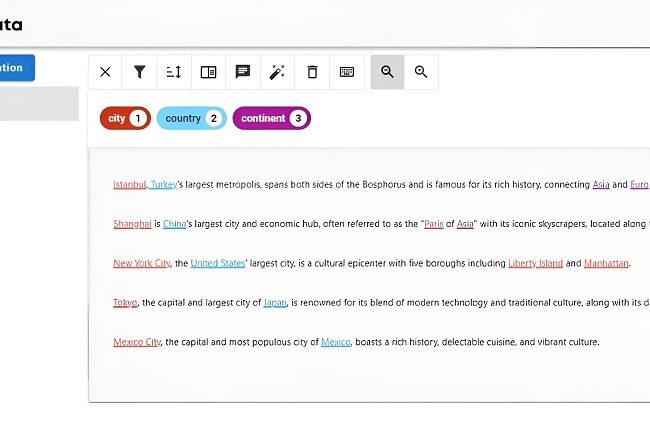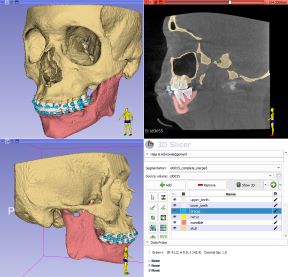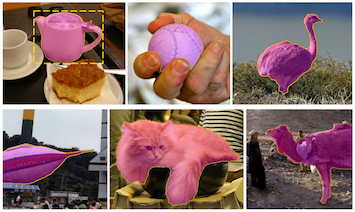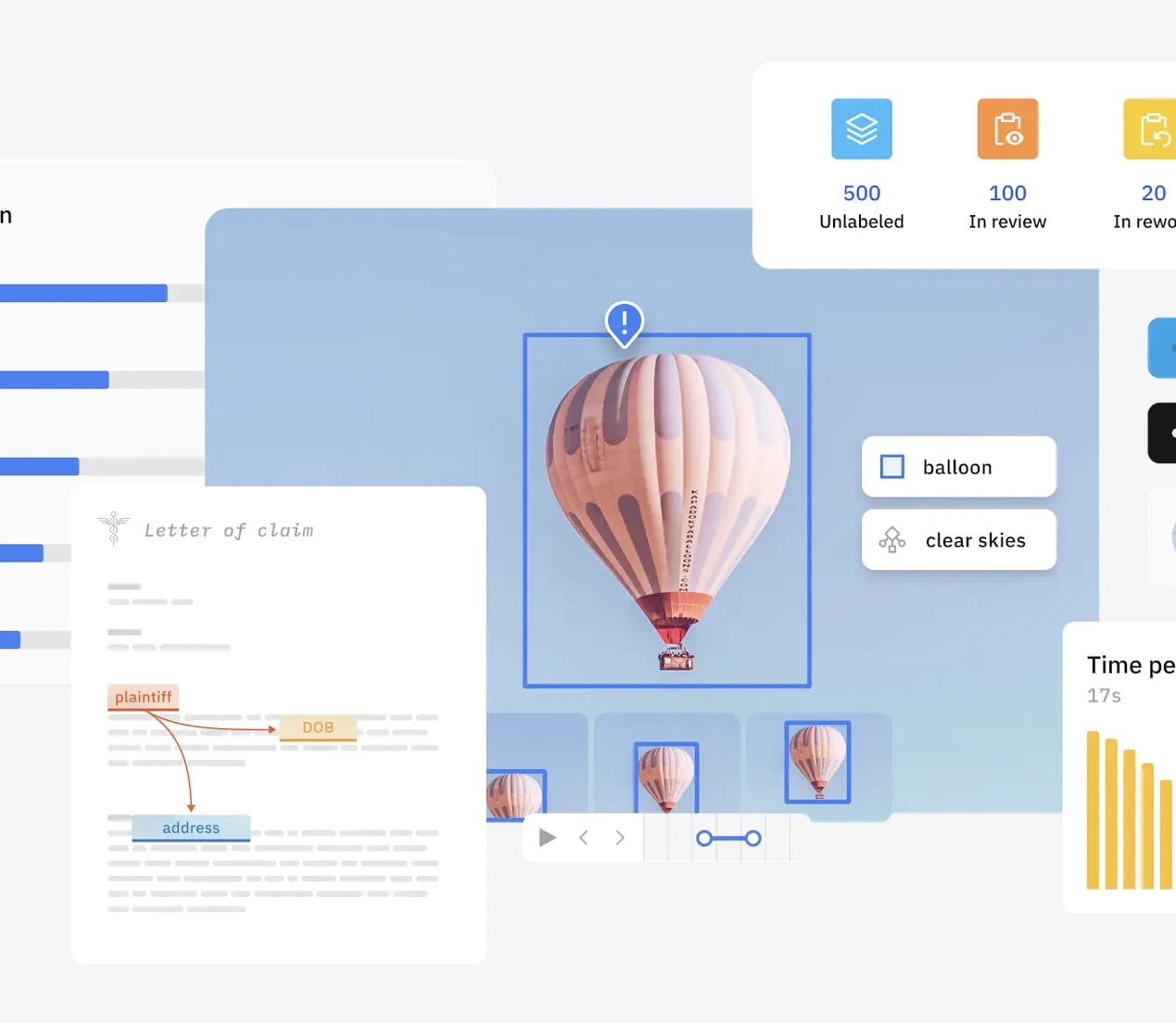Data labeling is the process of assigning relevant labels or tags to a dataset, making it easier for machine learning algorithms to learn patterns and make predictions. In this blog post, we will explore why data labeling is important, the challenges it presents, and key considerations when labeling data.
Data annotation is a crucial step in developing AI systems. The performance of machine learning models relies heavily on the quality and quantity of training data. Data annotation allows for the human review and categorization of datasets before feeding them into AI models. This process improves the model's ability to interpret and classify new data points correctly.

Data annotation tools empower companies to rapidly annotate diverse datasets spanning image recognition for autonomous vehicles, speech detection for virtual assistants, sentiment analysis on social media, and more. Annotation tools drastically reduce the time and resources needed to prepare quality training data. This allows companies to fully leverage AI/ML technology and quickly build innovative products.
In this article, we will provide an overview of 10 leading data annotation tools on the market. We will compare their key features, use cases, pros and cons, and pricing models. Whether you need image, text, audio or video annotation, this guide will help you select the right tool for your project goals and budget. Let’s get started with the top 10 data annotation tools.

Image Annotation
Image annotation is the process of labeling and tagging visual elements in images to generate training data for computer vision systems. Annotating images helps algorithms understand and interpret visual information, which is crucial for machine learning models in applications like self-driving vehicles, medical imaging, and facial recognition.
There are several popular tools used for image annotation:
Labelbox is a collaborative data labeling interface that allows teams to annotate images and videos. It has capabilities like polygon, rectangle, brush, and magic wand segmentation tools to efficiently tag objects. Labelbox is used by companies like Waymo, Lyft, and Nuance for annotating diverse computer vision datasets.
Playment offers a wide range of image annotation features like bounding boxes, segmentation, keypoints, and optical character recognition. It has robust quality management tools to ensure high-quality training data. Playment serves various industries including retail, autonomous vehicles, and pharmaceuticals.
SuperAnnotate provides image annotation through its web-based platform and mobile apps. It supports common tasks like classification, detection, segmentation and transcription. Key features include automated data checks, analytics dashboards, and collaboration workflows for teams. SuperAnnotate is used by companies like Samsung, Panasonic, and Shell.
Overall, image annotation generates datasets that allow computer vision models to interpret visual concepts accurately for real-world applications. The right tools improve efficiency and quality in the annotation process.

Text annotation is the process of labeling parts of text with categories or other metadata. It is a key task in natural language processing (NLP) and machine learning workflows.
Text annotation helps create datasets to train AI systems in text classification, named entity recognition, sentiment analysis, and other common NLP tasks. By labeling text examples, the models can learn which words or phrases correspond to different categories.
Some popular open source tools for text annotation include:
Doccano: A browser-based annotation platform for sequence labeling and text classification. Users can collaborate on datasets with team members. It supports common formats like CSV, JSON, and CoNLL.
Tagtog: A web-based text annotation tool designed for entity and relationship extraction. It can handle documents in over 40 languages. The interface shows visualizations like histograms to monitor annotation progress.
INCEpTION: A customizable annotation platform developed by the Technical University of Berlin. It supports common NLP tasks like named entity recognition, part-of-speech tagging, and image captioning. Users can create customized annotation interfaces and workflows.
Text annotation generates training data to develop more accurate NLP models. By investing time in careful annotation with domain experts, you can improve machine learning results on language tasks like sentiment analysis, text classification, and information extraction. The right tools streamline the process of labeling text at scale.
Video Annotation
 Video annotation involves labeling objects, actions, events, and concepts within video data. It is a critical task for developing computer vision models to analyze video content. Applications of video annotation include:
Video annotation involves labeling objects, actions, events, and concepts within video data. It is a critical task for developing computer vision models to analyze video content. Applications of video annotation include:
Self-driving vehicles – Annotating traffic lights, pedestrians, road signs, and other objects helps train models to understand driving environments.
Surveillance – Labeling people, objects, and events in security footage enables detecting suspicious activities.
Sports analytics – Tracking player and ball movements provides insights into plays and strategies.
Health care – Identifying medical procedures, tools, and anatomy in videos can help research and education.
Human-computer interaction – Recognizing gestures, faces, activities and environments allows smart interfaces to understand users.
Specialized video annotation tools have emerged to enable efficient annotation at scale. Some popular options include:
Vatic – An open-source tool developed at MIT that supports bounding box, polygon, and point annotations. It enables collaborative annotation workflows.
Dataturks – A cloud-based platform supporting various annotation types for images, videos, and documents. It has built-in ML to suggest annotations.
Hive – A suite of annotation tools focused on 2D and 3D object bounding boxes, segmentation, and tracking across videos. It’s optimized for autonomy datasets.
The best video annotation tool depends on your specific use case and volume. But leveraging automation and collaboration can maximize annotation throughput. High-quality labeled video data is essential for developing accurate computer vision models.
Audio Annotation
Audio annotation involves labeling audio data like speech, music, and ambient sounds. It has become increasingly important with the rise of speech recognition systems, smart speakers, and voice assistants. Companies need large volumes of labeled voice data to train AI models to understand natural language.
Some key applications of audio annotation include:
Speech recognition – Labeling speech audio helps train systems to transcribe speech to text accurately. Data is needed in different languages, accents, audio conditions etc.
Speaker recognition – Identifying and labeling distinct speakers in audio helps train speaker identification systems. This has uses in call center transcriptions, audio meeting notes, and more.
Sentiment analysis – Labeling the sentiment and emotions within voice data can train systems to detect tone, mood and respond appropriately in conversational AI applications.
Sound event detection – Tagging sounds like dog barks, car horns, door knocks etc within audio data improves ambient sound recognition. This helps in surveillance, context-aware devices and automotive audio.
Specialized audio annotation tools have emerged to help generate labeled datasets at scale. Some popular options include:
Appen – Offers speech, sentiment, acoustic and speaker data annotation through a managed workforce of over 1 million contractors.
Anthropic – Provides a conversational AI data annotation platform with tools for intent classification, dialogue policy and more.
Heartex – Focuses on high-quality annotation of voice data for speech recognition and natural language processing.
The right audio annotation tools and datasets catalyze more advanced and accurate speech and audio AI. As voice-based applications continue proliferating, demand for labeled audio data will keep intensifying.
 3D Annotation
3D Annotation
3D annotation involves labeling objects and regions in 3D models and point clouds. It has become increasingly important with the rise of 3D data capture techniques like LiDAR and applications in augmented reality, virtual reality, and computer vision.
Some key applications of 3D annotation in computer vision include:
Self-driving cars – 3D annotation helps self-driving cars detect and classify other vehicles, pedestrians, road signs, and terrain from LiDAR point clouds. Companies like Waymo use 3D bounding boxes to label objects in LiDAR data.
Indoor mapping – Annotating 3D indoor spaces helps robots and drones navigate and map building interiors. Objects like doors, windows, furniture need to be labeled in 3D point clouds.
Medical imaging – 3D annotation is used to label CT and MRI scans to detect tumors, segment organs, identify anomalies. This assists doctors in diagnosis and surgery planning.
Object recognition – Labeling objects in 3D improves object detection and classification in applications like bin picking in warehouses. Bounding boxes, instance segmentation and keypoints help train computer vision models.
Specialized tools have emerged for 3D annotation like Voxel51, RealityCap, Polygon and Labelbox. These platforms allow annotating point clouds and mesh models with cuboids, shapes, and polygons to train computer vision algorithms. They offer 3D visualization, automation through machine learning, and integrations with popular 3D data formats. The key advantage over 2D annotation is the ability to label in 3D space across x, y and z axes. This provides more accurate data for real-world 3D applications.
Annotation Process
The annotation process typically involves three main steps:
Data Collection
The first step is collecting the data that needs to be annotated. This may include images, text documents, audio clips, videos, 3D models, or other types of data. The data is usually gathered from various sources relevant to the machine learning task the annotated dataset will be used for. Care should be taken to collect a sufficient volume and diversity of high-quality samples.
Data Labeling
Once data has been collected, human annotators label each piece of data according to the annotation guidelines. For example, drawing bounding boxes around objects in images, highlighting toxic text, or transcribing speech in audio clips. Depending on the data type, annotators may use annotation tools with features like tagging, segmentation, transcription, categorization, relationship linking, or free-form comments. Clear annotation guidelines and quality checks help ensure accuracy and consistency.
Quality Control
Quality control procedures help validate the work of annotators and identify any errors or inconsistencies that need to be corrected. This usually involves techniques like consensus assessment between multiple annotators, spot checks by expert reviewers, and statistical analysis to detect anomalies. Maintaining high-quality annotated data is crucial for developing accurate machine learning models. Iterative improvements to guidelines, tools, and annotator training may be needed to reach target quality levels.
The annotation process requires significant time and human effort. However, properly annotated data enables training machine learning algorithms that can automate or augment human capabilities.
Choosing Annotation Tools
When choosing data annotation tools, there are several important factors to consider:
Accuracy
The accuracy of the annotation is critical, as errors can significantly impact the quality of your training data and AI model. Look for tools that have built-in checks, validation, and quality assurance to minimize errors. Some tools allow you to assign each task to multiple annotators to cross-check work.
Speed
The time and cost involved in manual annotation can be high, so look for tools that help accelerate the process. Capabilities like automated pre-annotation using machine learning, keyboard shortcuts, collaboration, and robust interfaces can increase annotation throughput and efficiency.
Cost
Pricing models vary widely, from free open-source options to enterprise platforms with monthly subscriptions or per-project fees. Consider both direct costs and indirect costs likeannotator time. Tools with auto-annotation and active learning features can help reduce the amount of manual work required.
Trusted Providers
When dealing with sensitive data, it’s important to choose established, reputable providers with security measures like encryption and access controls. Many providers have secure cloud-based platforms while also offering on-premise options. Understanding how data is processed and stored is critical.
Selecting the right annotation tool requires balancing these key factors against the specific needs of your use case. The tool should support your data types, annotation schemas, and integration requirements while meeting budget and quality objectives. Testing different solutions with a sample dataset is recommended when evaluating tools.
Top 10 Annotation Tools
Labelbox – Labelbox is a leading data labeling platform that offers versatile tools for image, text, video, and audio annotations. It enables efficient labeling workflows and integrates with popular ML frameworks.
Playment – Playment offers AI-assisted annotation for images, videos, and text. It has robust QA features, easy project management, and tools for annotator training and evaluation.
Appen – Appen provides image, video, text, and speech annotation services, combining both machine learning and human intelligence. It offers secure data annotation and specializes in custom labeling projects.
Amazon SageMaker Ground Truth – This managed data labeling service by AWS handles annotation workflows for image, video, and text data. It provides built-in robustness, accuracy, and explainability to training datasets.
Figure Eight – Figure Eight delivers fast, accurate data annotation through combination of human annotators and AI assistance. It offers tools for images, text, videos and supports Common Annotation Schema.
CloudFactory – CloudFactory provides end-to-end data annotation services for computer vision, NLP and speech applications. It offers versatile annotation interfaces and robust quality management.
Cogito – Cogito is an AI-powered data annotation tool focusing on text and audio data. It combines human insight with machine learning for efficient annotation workflows.
Clickworker – Clickworker provides crowdsourced data annotation services for images, videos, text and more. It offers accurate labeling thanks to robust quality management.
SuperAnnotate – SuperAnnotate is an AI-assisted data annotation platform for 2D/3D image and video annotation. It focuses on computer vision use cases and integrates with popular frameworks.
Samasource – Samasource manages end-to-end data annotation projects leveraging a network of trained data specialists. It focuses on high-quality, large-scale annotation services.
Conclusions
Data annotation is an essential part of creating high-quality training data for machine learning models. As we have seen, there are many different types of annotation tools available, each with their own strengths and weaknesses.

When choosing an annotation tool, it is important to consider your specific use case and data types. Factors like annotation speed, cost, supported data formats, collaboration options, and ease of use should all play a role in your decision. For smaller teams and projects, a simple lightweight tool like Labelbox or SuperAnnotate is likely sufficient. Larger organizations with complex needs may require a more powerful platform like Appen, Scale, or Hive.
No matter which tool you choose, the key is ensuring high-quality, accurate annotations. This provides the critical training data needed for your machine learning algorithms to work properly. While annotation requires an upfront investment, it pays dividends later by enabling the development of more accurate models.
The importance of data annotation cannot be understated. Annotated data helps algorithms understand and interpret information better. It reduces bias in models and allows them to generalize more successfully. As artificial intelligence continues proliferating into more industries, the demand for annotated data will only grow. Companies who invest in annotation tools and processes today will have a competitive advantage in developing cutting-edge machine learning applications in the future.
When starting an annotation project, take the time to carefully evaluate your options. Get hands-on with trial versions of tools when possible. Read reviews and case studies to learn what works well for similar use cases. And don’t underestimate the value of quality annotated data. With the right annotations powering your models, the possibilities are endless.


